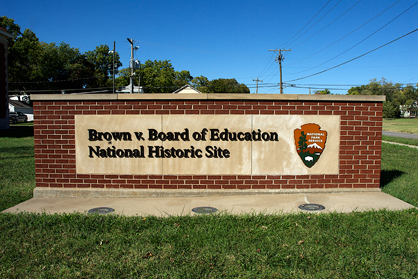Historically black colleges and universities (HBCUs) are colleges or universities that were established before 1964 with the intention of serving the African-American community. There are more than 100 historically black colleges in the United States, and most of them are located in the South or in the Eastern states. Additionally, there are two HBCUs in Missouri, another two in Ohio, and one in the Virgin Islands. Institutions that were founded or began to admit African-American students after the Brown v. Board of Education ruling and now boast high levels of African-American enrollment are not by definition HBCUs.

There are presently six historically black colleges and universities in the United States housing law schools: Howard University, Texas Southern University, Southern University, Florida Agricultural and Mechanical University (FAMU), North Carolina Central University, and the University of the District of Columbia.
Howard University
In 1867, the U.S. Congress chartered Howard University, a coeducational private institution in Washington, DC. Boasting a diverse faculty and student body, the main campus of Howard University is located in Northwest Washington; the law school resides on a separate campus approximately 15 minutes away.
Howard University School of Law opened its doors in 1869 when there was a dire need for lawyers committed to helping black Americans secure and protect their newly established rights. At that time, the first six law students met at night in the homes and offices of faculty. At the dawn of the 20th century, Howard University School of Law became not only a school but also a symbol of legal activism and a clearinghouse for information on the civil rights struggle.
Texas Southern University was established in 1947 by the 50th Texas Legislature and was originally known as Texas State University for Negroes. In 1951, the name was changed to Texas Southern University.
The Thurgood Marshall School of Law came into existence as a result of a 1946 lawsuit brought by Heman M. Sweatt, who was denied admission to the University of Texas because he was black. Because of the separate-but-equal provision in the Texas Constitution, the state legislature provided for an "interim and separate law school for Negroes." During its first year, the law school was located in Austin, TX, but it was eventually moved to the new university campus in Houston.
Southern University
On December 16, 1946, the Louisiana State Board of Education responded to Charles J. Hatfield, a black man seeking to attend a Louisiana law school, and established the Law School for Negroes at Southern University. After it had operated for 38 years as a school of law, the Southern University Board of Supervisors re-designated the school as the Southern University Law Center. The law center has more than 2,500 graduates and is one of the nation's most racially diverse law schools.
Hatfield was the recipient of the law center's first honorary Juris Doctor during the May 2002 commencement. He passed away on June 14, 2002, at the age of 87.
Florida Agricultural and Mechanical University (FAMU)
Florida A&M University is located in Tallahassee, FL, and is a comprehensive, public, coeducational, and fully accredited land-grant university. The College of Law was founded on December 21, 1949, and the first class was admitted in 1951. In 1966, the Florida Board of Control withdrew its permission for the institution to admit law students, and the law school graduated its last class and closed its doors two years later.
The 2000 Florida Legislature unanimously passed legislation reestablishing a law school at Florida A&M University.
North Carolina Central University
In 1939, the North Carolina General Assembly authorized the establishment of the North Carolina College for Negroes, as it wanted to provide a law school in order to give African Americans the opportunity to study law. Although its opening was delayed due to a lack of enrollment, the law school formally opened in 1940 with four students.
Learn the 10 Factors That Matter to Big Firms More Than Where You Went to Law School
In 1944, the school admitted its first women, and it began enrolling Caucasian students in 1965. The evening program was established in 1981 and is still the only evening law school program between Atlanta and Washington, DC.
University of the District of Columbia
Since the University of the District of Columbia was chartered in 1974, it is not by definition an HBCU. Nevertheless, the University of the District of Columbia David A. Clarke School of Law received full accreditation from the American Bar Association on August 8, 2005, with the unanimous vote of the ABA House of Delegates. Here are some significant facts about the most diverse law school in the country.
- 51% of students are members of minority groups.
- 64% of students are women.
- The average student age is 27.
- It is ranked first in the nation in the category of "most progressive students" (Princeton Review, October 2006).
- It is ranked second in the nation in the category of "most welcoming of older students" (Princeton Review, October 2006).
- It is ranked fifth in the nation in the category of "best environment for minority students" (Princeton Review, October 2006).
- It is ranked fifthin the nation in the category of "most diverse faculty" (Princeton Review, October 2006).
Please see the following articles for more information about law school, the bar exam and succeeding in your first year of practice:
- Acing Law School Exams: Grade-A Advice
- What's Next after Finishing Law School
- First Year of Law School Survival Tips
- Does Law School Rank Determine Success?
- The Three Major Legal Fraternities and Why You May Want to Join One
- Late Bloomers: Going to Law School Later in Life
- Coping with Law School Dismissal
- Graduated From a Tier 3 Law School: There’s much you can do with your degree
- The Real World: Life after Law School
- Why You Should Think Twice About Remaining in Law (or Going to Law School)
- Should You Marry a Lawyer? A Couple's Guide to Balancing Work, Love and Amibition
- After Law School, B-School: The Rise of M.B.A.'s Among Attorneys
- Non-ABA-Accredited Schools May Offer Good Alternative
- Top Law Schools Analyzed and Ranked By America’s Top Legal Recruiter Harrison Barnes
- The Five Stages of Every Legal Career
- "Guidelines on Reciprocity or "Admission on Motion" among the States as per American Bar Association"
- Pass the Bar in One State, Work in Another
- Taking the Bar in Multiple States
- 10 Ways to Bounce Back After Failing the Bar and Pass on Your Next Attempt
- Don't Panic! Ten Tips for Surviving the Bar Exam
- New York's Exam: The Biggest Baddest Bar
- If You Have Failed the Bar Exam It Is Not the End of the World
- Barriers Fall for Out-of-State Attorneys
- The 10-Step, ''No-Fail'' Guide to Distinguishing Yourself as a First-Year Associate
- The Art of Drafting a Proper Legal Memo
- 5 Tips for First Year Law Firm Associates
- Top 39 Tips for New Litigation Associates and Trial Lawyers: How to Be a Good Litigation Attorney
- 2015 1st Year Salaries and Bonuses of the Top Law Firms



